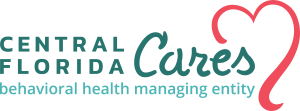Frequently Asked Questions about FASAMS
FASAMS is the Financial and Services Accountability Management System, developed for the Department of Children and Families, to track data specific to State and Federal reporting requirements. The term FASAMS is also frequently used to refer to the reporting requirements of the DCF FASAMS system, which are specified in the Pamphlet 155-2 available here: 155-2 v14 – For SAMH Providers – Florida Department of Children and Families (myflfamilies.com)
SRI stands for Source Record Identifier. SRIs uniquely identify a record in the source system and can be used to track records from various destination systems back to the source. SRIs should be unchanging. Further guidance can be found in the PAM.
POM stands for Performance Outcome Measure. The Performance Outcome Measure is described in depth in the Treatment Episode chapter (5) of the PAM.
FASAMS reporting is required for all data collected from 7-1-2021 and forward. Fiscal year 20-21 data, 7-1-2020 to 6-30-2020, should be reported in the older v12 format as you have been entering.
All clients will need a Client record prior to the submission of Treatment Episode records. For existing clients who are continuing an episode of care from before 7-1-2021, you can enter a reduced Treatment Episode containing just an Admission record and a Placement record. The Performance Outcome Measure, Diagnosis, and Evaluation records can be submitted the next time they are updated but should be entered within 3 months of record entry.
FASAMS reporting is required for all data collected from 7-1-2021 and forward. Fiscal year 20-21 data, 7-1-2020 to 6-30-2020, should be reported in the older v12 format as you have been entering.
No, the reduced reporting option is only for existing clients for whom these elements already exist in prior reporting.
This is approved until September 30, 2021. After that, all clients must have the full admission requirements as documented in the PAM.
If possible, report the actual admission date to your organization. If that is not possible, use any date between 7-1-2021 and the first date of service.
Client
SSNs and pseudo-SSNs are reported in the ProviderClientIdentifier subentity of the Client record.
At this time we ask that you report an SSN for all clients. For those without an SSN, report a pseudo-SSN. This is necessary to facilitate linkages between current and prior data sets.
You can report them, but you do not need to report them. If you perform file upload you should not include these elements unless you are reporting the data. For example: do not include the ProviderClientEmailAddresses node unless you are reporting an EmailAddress.
A Placement record reports the time that an individual was in a CSU, Inpatient Detoxification or Residential (all other beds) service, regardless of payer. There is also an Outpatient category for all non-bed services. Placement records should be submitted if a portion of the individual time at that placement was funded by DCF/Managing Entity. The start and end dates of the Placement should be the actual dates of the Placement, not just the DCF/ME funded portion.
Besides the fact that Service Event data must be reported with the proper corresponding placement for the type of service, the Placement record allows DCF to answer important questions about length of stay and readmissions to these higher levels of care.
There are two main types of evaluations for community providers: Level of Care and Level of Functioning. Level of Care evaluations provide a recommended placement for the individual in service. Level of Functioning evaluations provide reporting on the current functioning of the individual in service.
Level of Care evaluations should be reported at admission and whenever a change in the individual’s level of care occurs. Level of Functioning evaluations should be reported at admission, discharge, and at the regular interval of the Level of Functioning evaluation tool. For example: CFARS and FARS are usually reported at 6-month intervals following the initial assessment.
For those programs that do not require a specific Level of Functioning tool, providers can determine the tool to use based on what is appropriate to the population and the providers practices. The General Functional Improvement tool enables reporting on the important question of whether individuals in care are improving, while allowing flexibility in the field.
Wrong, all individuals should receive updated POMs on a quarterly basis. If you report data via direct data entry, the system will give you visual ques that a POM is due. If you report data via file upload, expect to receive exception reports on overdue POMs.
A project code is a way to indicate the the service being reported is part of a bundled rate project, such as FACT or BNET (which are paid based on the enrolled individuals, rather than individual services).
Only report the project code if you are reimbursed in a bundled manner for the project. If you are reimbursed based on units of service (for example: 30 units of Residential 2, 15 units of Outpatient, etc.) you would not report a project code. If in doubt, ask your contract manager or CFCHS data staff for assistance.
Use the ServiceEventCoveredServiceModifier to report the S1-S5 medication codes.

